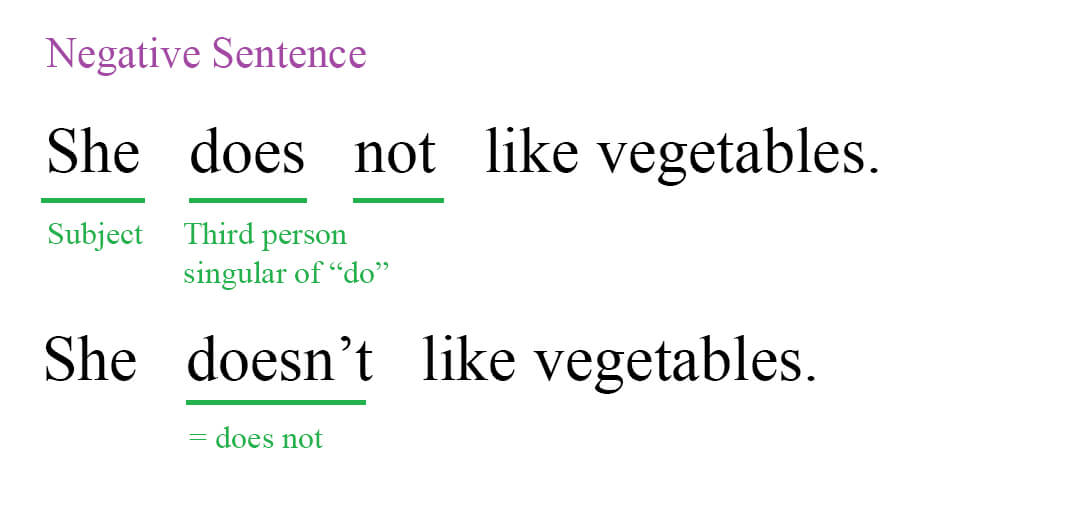Negative Sentence in Simple Present Tense
- To form a negative sentence in English, use 'do not' or 'does not' before the verb.
- For 'I', 'you', 'we', 'they', and many things or people, use "do not" or "don't".
- For 'he', 'she', 'it', or one thing or person, use "does not" or "doesn't".
- The verb that follows 'do not' or 'does not' is always in its base form.
To make a negative sentence in English, we usually use 'do not' or 'does not' before the verb. For example, if the positive sentence is "I like apples”, the negative sentence would be “I do not like apples”.
Do not / Don't
If the subject is "I", "you", "we", "they", or many things or people, put "do not" or "don't" after the subject.
"Don't" is the short form (contraction) of "Do not".
Examples:
-
You don't like apples.
Subject ("You") - don't - verb ("like") - object ("apples")
-
They do not like apples.
Subject ("They") - do not - verb ("like") - object ("apples")
Does not / Doesn't
For third-person singular (he, she, it, one thing or person), we put "does not" or "doesn't" after the subject. The verb must be in base form.

Examples:
-
She doesn't like vegetables.
Subject ("She") - doesn't - verb in base form ("like") - object ("vegetables")
-
This is WRONG: She doesn't likes vegetables.
-
It does not like apples.
Subject ("It") - does not - verb in base form ("like") - object ("apples")
Remember, the verb following 'do not' or 'does not' is always in the base form. As seen in the examples above, even though the subject 'he' usually changes the verb (like to likes), in negatives we keep the base form of the verb (like).
和AI英語導師一起練習這個主題
AI英語導師會教你文法,並以對話的形式和你一起練習。 另外,還有 100 多個有關該主題的練習題來鞏固您的理解。
在您的手機或平板電腦上免費試用 ALULA








你對這節課有任何問題嗎?請在下面的評論區提問。